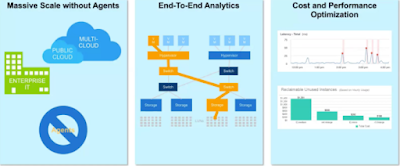I’ve been working with NetApp OnCommand Insight for around 6 months, and now* I think I’ve worked out what core skills are required to be a successful NetApp OnCommand Insight Professional managing/working on an Enterprise deployment of NetApp OCI.
*I wish I knew this 6 months ago.
- 1) MySQL
- 2) IBM Cognos
- 3=) REST API
- 3=) Python
My reasons
1) MySQL
The Data Warehouse (DWH) is a MySQL database, and to get the most out of all the awesome ‘business intelligence’ data in the OCI DWH you need to have good SQL query skills (like for any Enterpise MySQL database). Essentially, you need to be a ‘data weaver’ and able to stitch data together from various schemas and tables.
2) IBM Cognos
The NetApp OCI Data Warehouse ships with IBM Cognos. To be able to create impressive reports, you need to be a wizard with IBM Cognos. If your customer decided not to use Cognos (they don’t have to use Cognos, it’s just plugged into the DWH with a JDBC connector) - say Crystal Reports instead - then you’d need mastery of that reporting product.
3=) REST API
For integration with the NetApp OCI Operational Server you’ll typically be using the REST API (standardizing on using one integration point for OCI - REST - and one integration point - SQL/JDBC - for DWH makes sense).
3=) Python
In order to leverage the REST API, you’ll want to use a scripting language, and Python is the number 1 choice these days.
If you download the OCI REST API samples from your OCI server, you get:
- 1 Java example
- 1 PowerShell example
- 14 Python examples (the oci_rest.py provides basic utilities you can use.)
6 out of 10 integration scripts on NetApp Storage Automation Store are Python.
Minor Mention
OCI Dashboards)
OCI Dashboards is also a useful skill to learn, but not particularly hard, and you’ll find loads of good examples on the NetApp Storage Automation Store under ‘Solution Packs’.
Developing NetApp OnCommand Insight Skill
Once you’ve got the basics of NetApp OCI/DWH administration and management out the way, then focus on:
1) MySQL learning:
- Follow some MySQL tutorials.
- Ask yourself questions “how do I find this information...” and find the MySQL queries to provide answers.
- Look at other peoples’ work and examples.
- Build your own MySQL queries.
2) IBM Cognos Learning:
- If you can, search out Mike Moon’s training videos. I reckon these are the best resource for learning how to use IBM Cognos in the context of NetApp’s OCI DWH.
- Look at examples and reverse engineer them.
- Build your own reports.
3) REST API & Python:
- Take a Python tutorial.
- Take a REST API tutorial and learn about OCI’s REST API from the internet and online documentation.
- Download the OCI REST API samples and play around with the Python examples.
- Build your own Python scripts to talk to the REST API.
- Build your own Python scripts to talk to the DWH MySQL database.
Also See
- Highlights from NetApp Insight 2018’s: 1266-3 Accelerating Success through Integrations with OnCommand Insight
- Introduction to OnCommand Insight REST API / Points of Integration with OCI

Comments
Post a Comment